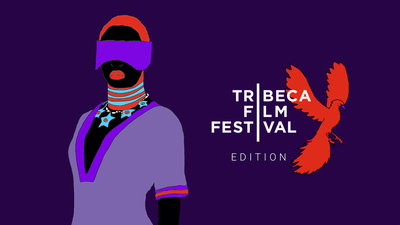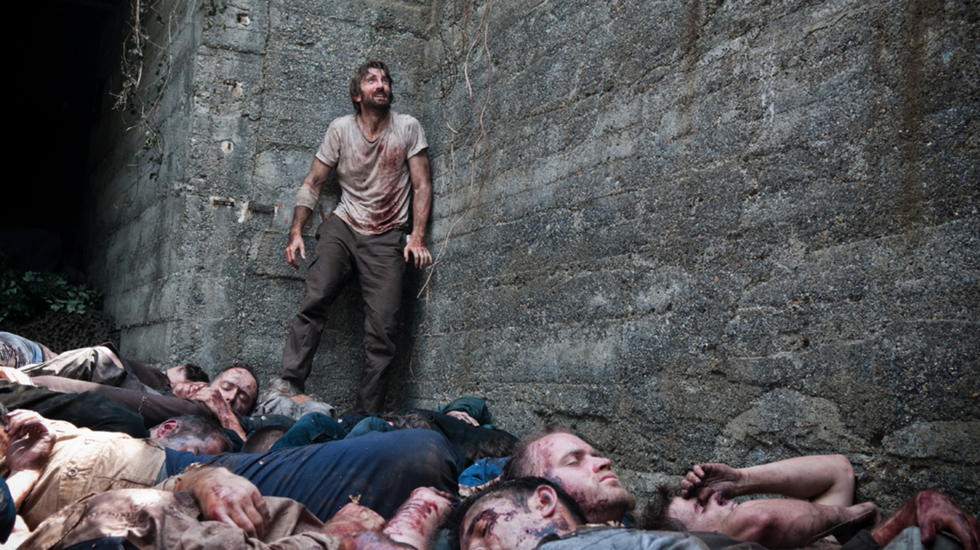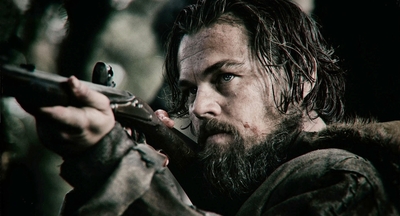
BY KAREN KEMMERLE |
Director Gonzalo López-Gallego on ‘Open Grave,’ Sharlto Copley and Unpredictable Filmmaking
We spoke to the Spanish director/editor about his latest film, working with the thriller genre, and the challenges of shooting inside a mass grave.

In the enigmatic thriller, Open Grave, Shartlo Copley stars as Jonah, a man who wakes up in a pit of dead bodies with no idea of his identity or how he got there. As he stumbles across a group of strangers, Jonah is held at gun-point as they try to remember who they are and their connections to one another. As suspicions rise, the group must determine if the real threat is someone among them or forces from the outside world.
Director Gonzalo López-Gallego spoke with us about genre-filmmaking, building characters, and why he chooses to edit his own movies.
Tribeca: Open Grave is an excellent horror/thriller hybrid. What drew you to Chris and Eddie Borey’s script? Were you able to give any input?
Gonzalo López-Gallego: Oh yes, the creative team came to me with open minds. The producers sent me the script because they liked the movie that I did here in Spain called King of the Hill. They saw it at the Toronto Film Festival, and I guess they must have seen something in it similar to what they wanted to do with Open Grave. After I read the script, I was really struck by its overall mystery. It was such a page-turner.
I was really drawn to the character of Jonah. The memory loss that he suffers from is so extreme. He has to ask himself some traumatic questions—Am I a killer? Did I really do those things or not?—with barely any ground to stand on. I wanted to make the movie feel primal at first. When he wakes up in the pit of bodies, it’s like he starts breathing for the first time. He’s like a newborn discovering fire and even discovering things like taste. After this horrifying experience, he’s then thrust into a situation in which all the other characters believe he is the killer. The film wouldn’t have been half as effective if we had not witnessed his re-birth, in a way. Tribeca: This is Sharlto Copley’s first starring role since District 9. What inspired you to choose him as your “Jonah”?
Tribeca: This is Sharlto Copley’s first starring role since District 9. What inspired you to choose him as your “Jonah”?
GLG: He was already being talked about for the role before I even got involved with the project. I remember Sharlto was one of the first names they brought up to me. As I am a huge fan of District 9, I was really excited about having him play Jonah. He’s got this incredible presence, which is a welcomed addition to any project. After he read the script, he signed on and was happy and eager to collaborate. It was an amazing experience, and now, I’m lucky to be able to call him a friend.
Tribeca: Open Grave is a very disjointed cinematic experience, which is a good thing. It unfolds like a mystery as the characters gradually recover their memories. Was the movie shot out of sequence? How did this affect the way you directed your cast?
GLG: We shot it out of sequence, which is pretty standard practice. I wish I could have shot it chronologically, but you’re never lucky enough to do it like that. You have to come to set with your homework already done. I used to work with biographies so I try to write full profiles and backgrounds for each character. When we rehearse, we explore what happened to these characters before the events of the movie take place or even during unseen events that we only allude to. It’s important for me as a director to help my cast establish a general, overall perspective of their characters. When they come to set, I want them to be ready to run and improvise. So it’s important that we all know the characters inside and out.
You never know what might happen while working on an independent movie.
Tribeca: You frequently work with cinematographer Jose David Montero on your films. Did you jointly determine the look you wanted for the film?
GLG: Yes, we always decide the look of the movie together. For Open Grave, we drew inspiration from paintings, especially from the 19th century. We were very conscious of the fact that we wanted to keep the landscape beautiful and to use it as an unsettling backdrop for the horrific events of the film. We wanted to do horror in the daylight.
Tribeca: Naturally, one of the main set pieces in the film is a massive open grave filled with dead bodies. Can you talk about how you executed this effect with your team? How many of the bodies were real and how many were placed?
GLG: We shot all the pit scenes in the movie in about two and a half days. We have three or four big scenes in the grave throughout the course of the film. It was quite a challenge. We tried to think of the pit as a cake, if you can believe it. The first layer was clothes and garbage [laughs]. We were able to use quite a few dummies, but we probably have about fifty or sixty actors lying in there in full make up. For the crew and the particular actor to be able to stand, we had to erect platforms that we could move back and forth.
It was awkward and difficult, but it looked so great. Of course, both the cast and crewmembers complained when the rain started pouring over their heads. [laughs] It was a fun experience, at least for me, but I don’t know if people would love to repeat it. Tribeca: Were the open grave scenes the biggest challenges you faced during the production process?
Tribeca: Were the open grave scenes the biggest challenges you faced during the production process?
GLG: Those scenes were pretty difficult. However, it was quite a challenge to shoot the night sequences as well. We had pretty bad luck with rain. A terrible storm blew in, and we had to take everybody out of the pit because it was really dangerous. We had to think pretty quickly. Plus, it was really hot during the daytime, which was unpleasant.
However, I don’t want to complain. You never know what might happen while working on an independent movie. There’s never much time, and you have to be open-minded and quick enough to work with what you’re given. I feel very lucky to be a working filmmaker.
Tribeca: In addition to directing the film, you also served as its editor. Did that dual role impact how you worked on set? Why did you choose to take on both jobs?
GLG: When I was really young and doing my own short, crappy films, I always edited them myself. In fact, my first job in the film industry was as an editor. As I started directing my own films, I found that it was really helpful to go through the editing process. I knew exactly what material I was taking back with me. I’m always editing in my head anyway, so it makes the most sense for me to cut my own films.
It’s important for me as a director to help my cast establish a general, overall perspective of their characters.
Tribeca: You have always worked primarily in the horror/thriller genre. What do you think draws you to these projects? Is there any other genre you’d like to try?
GLG: I remember getting the script for King of the Hill after I had completed my first two movies. I instantly felt comfortable working with somebody else’s script and giving my opinion about it. I really like the collaborative process. When I was writing my own scripts, I could feel myself getting impatient. I just wanted to get on set and film the movie already! [laughs] It’s easier for me to read someone’s script and imagine the film in my head. I feel I have much more to offer in that sense.
I do find myself drawn to thrillers because I love to be surprised. I definitely look for unpredictability in all my projects, and Open Grave had that in spades. I also love experimentation, and I enjoyed working on Apollo 18 because I’ve always been a science fiction fan. My next project is going to be more of a Western, and I’m really excited about that. I think it’s going to be really different.
Tribeca: Your next film is going to be The Man on Carrion Road with Patrick Wilson. Can you tell us a little bit about the project?
GLG: It’s such a great script from this talented guy named Nils Lyew. It’s a character-based drama that is beautiful, but super violent at the same time. [laughs] It’s rare that you read something the first time through and feel that the characters are already so richly developed. It looks like it’s going to happen soon, so I’m keeping my fingers crossed.

